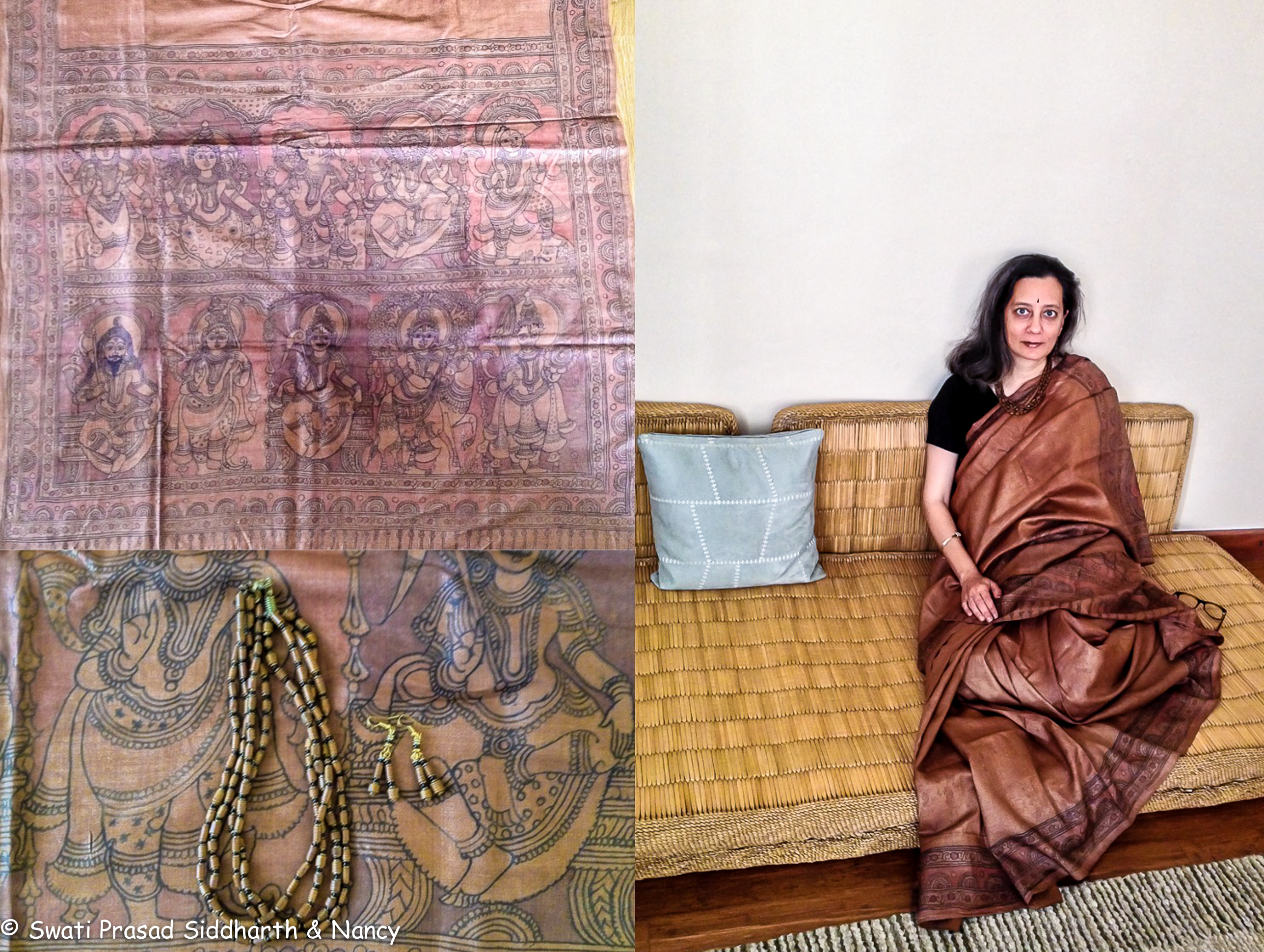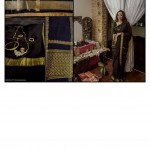Ganesh Chaturti – Day 8
10/100 – Day 8 Ganesh Chaturti
Kalamkari – penmanship – is the name of this art form – originating from the state of Andhra Pradesh in Southern India. Traditionally a “kalam” or pen is used for drawing the outline of the subject. The pen is made of a finely sharpened length of bamboo. The design is then it is filled in with natural or vegetable dyes. The cloth has to be washed out after the application of each colour. This could be up to 20 times per piece of cloth!
This raw silk saree has drawn in its pallav the Dashavatara, or the 10 incarnations of Lord Vishnu. Though these are the stories of mythology, the 10 incarnations follow perfectly the evolution of the animal world – from fish to man.
It was a stroke of pure luck finding this saree at a completely ridiculous price – given the material and the hand painted designs at a wonderful shop called Kalpadruma in Chennai – sometime in 1994-96.
The beads in the jewellery is made by the Pokot tribe in Kenya / Uganda. They are called Pokot beads for easy identification. They are carefully carved out of the root of a local plant. These particular beads had been stripped from an old traditional neckpiece and strung together to this more modern design. Original neckpieces look very similar to wide collars that are clasped loosely around the neck.


OMG! what a devine saree….beautiful indeed…